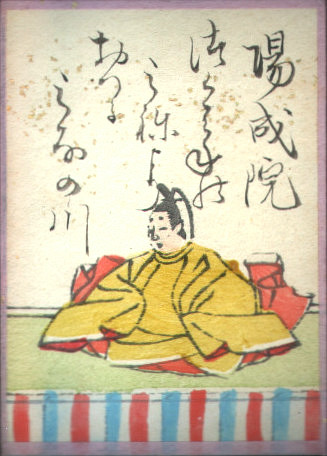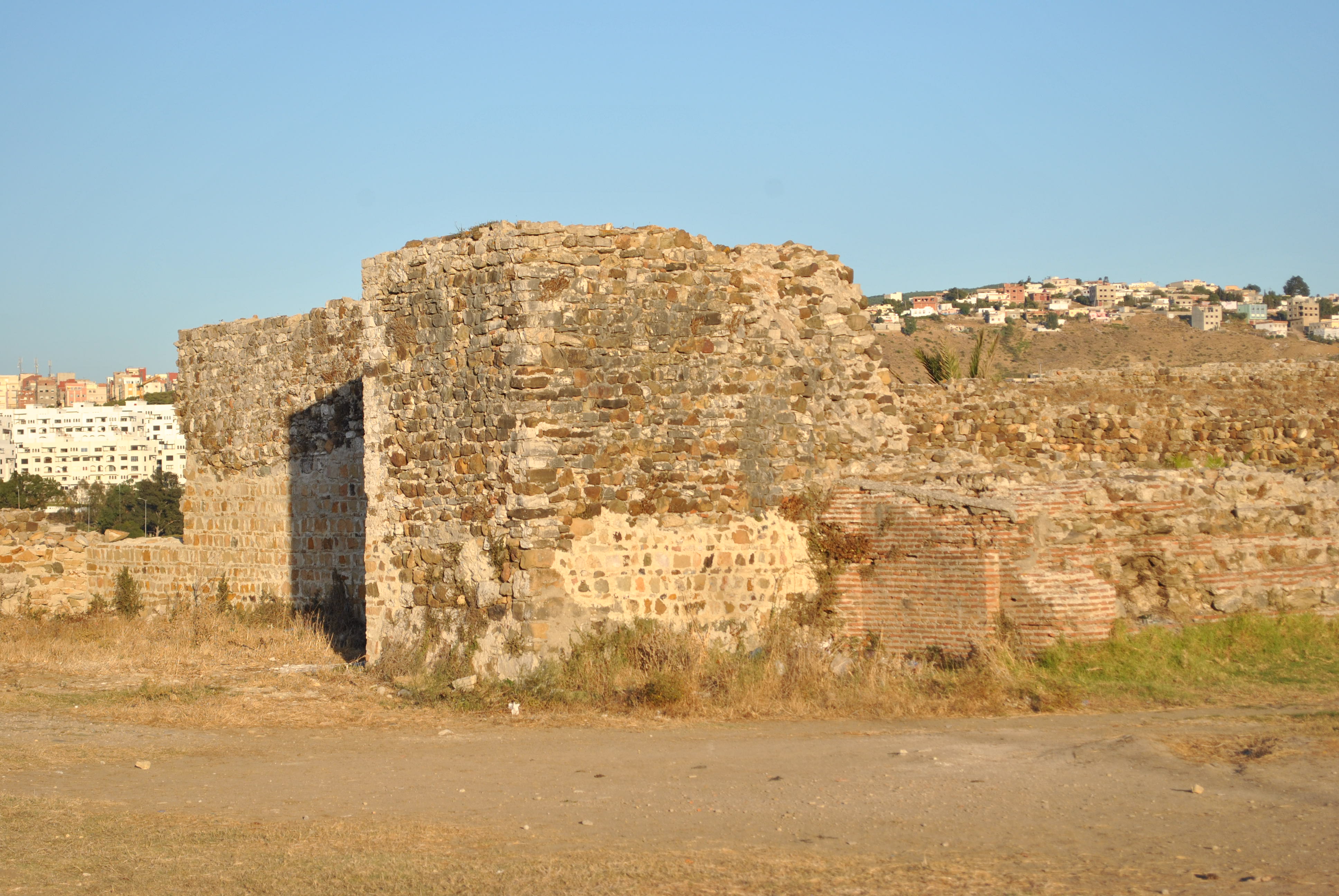|
Al-Qasim Guennoun
Al-Qasim Jannun ibn Muhammad () was an Idrisid ruler in Morocco in 937–949. Al-Qasim descended from a cadet branch of the Idrisid dynasty: his grandfather, al-Qasim, was a younger son of the dynasty's second ruler, Idris II. At the beginning of the 10th century, Idrisid ruler in Morocco collapsed, amidst civil war between the various branches of the Idrisid family and the rival Abu Sahl family, Kharijite uprisings, invasion by the newly established Fatimid Caliphate, along with the intervention of the Umayyad Caliphate of Cordoba. A complicated power struggle ensued in the 930s. Al-Qasim, who ruled parts of the north of the country, initially sided with the Fatimids against the renegade Fatimid general Musa ibn Abi'l-Afiya. With Fatimid assistance, Ibn Abi'l-Afiya was defeated and killed, allowing al-Qasim to establish an autonomous emirate in the northern parts of the country, in the Rif Mountains and beyond, including Basra, Azayla, and Tangier Tangier ( ; , , ) is a cit ... [...More Info...] [...Related Items...] OR: [Wikipedia] [Google] [Baidu] |
Emir Of Morocco
This is a list of rulers of Morocco since 789. The common and formal titles of these rulers has varied, depending on the time period. Since 1957, the designation King has been used. The present King of Morocco is Mohammed VI of Morocco, Mohammed VI of the Alawi dynasty, since 23 July 1999. Idrisid dynasty (788–974) Almoravid dynasty (1040–1147) Almohad dynasty (1121–1269) Marinid dynasty (1195–1465) Idrisid interlude (1465–1471) * Muhammad ibn Ali Idrisi-Joutey (1465–1471) Wattasid dynasty (1472–1554) Saadi dynasty (1544–1659) Dila'i interlude (1659–1663) * Mohammed al-Hajj ibn Abu Bakr al-Dila'i, Muhammad al-Hajj ad-Dila'i (1659–1663) Alawi dynasty (1631–present) 1631–1957: Sultans of Morocco 1957–present: Kings of Morocco Timeline Royal standard File:Royal standard of Morocco.svg, Royal standard of Morocco See also * Succession to the Moroccan throne * History of Morocco * Politics of Morocco References {{DEFAULTSORT:L ... [...More Info...] [...Related Items...] OR: [Wikipedia] [Google] [Baidu] |
Rif Mountains
The Rif (, ), also called Rif Mountains, is a geographic region in northern Morocco. It is bordered on the north by the Mediterranean Sea and Spain and on the west by the Atlantic Ocean, and is the homeland of the Rifians and the Jebala people. This mountainous and fertile area is bordered by Cape Spartel and Tangier to the west, by Berkane and the Moulouya River to the east, by the Mediterranean to the north, and by the Ouergha River to the south. The Rif mountains are separated into the eastern Rif mountains (Nador, Driouch, Al Hoceima) and western Rif mountains (Tangier, Tetouan, Chefchaouen, Taounate). Geography Geologically, the Rif Mountains belong to the Gibraltar Arc or Alborán Sea geological region. They are an extension of the Baetic System, which includes the mountains of the southern Iberian Peninsula across the strait. Thus, the Rif Mountains are not part of the Atlas Mountain System. Major cities in the greater Rif region include Nador, Al Hoceima (also called Vil ... [...More Info...] [...Related Items...] OR: [Wikipedia] [Google] [Baidu] |
10th-century Arab People
1 (one, unit, unity) is a number, numeral, and glyph. It is the first and smallest positive integer of the infinite sequence of natural numbers. This fundamental property has led to its unique uses in other fields, ranging from science to sports, where it commonly denotes the first, leading, or top thing in a group. 1 is the unit of counting or measurement, a determiner for singular nouns, and a gender-neutral pronoun. Historically, the representation of 1 evolved from ancient Sumerian and Babylonian symbols to the modern Arabic numeral. In mathematics, 1 is the multiplicative identity, meaning that any number multiplied by 1 equals the same number. 1 is by convention not considered a prime number. In digital technology, 1 represents the "on" state in binary code, the foundation of computing. Philosophically, 1 symbolizes the ultimate reality or source of existence in various traditions. In mathematics The number 1 is the first natural number after 0. Each natural numbe ... [...More Info...] [...Related Items...] OR: [Wikipedia] [Google] [Baidu] |
Year Of Birth Unknown
A year is a unit of time based on how long it takes the Earth to orbit the Sun. In scientific use, the tropical year (approximately 365 solar days, 5 hours, 48 minutes, 45 seconds) and the sidereal year (about 20 minutes longer) are more exact. The modern calendar year, as reckoned according to the Gregorian calendar, approximates the tropical year by using a system of leap years. The term 'year' is also used to indicate other periods of roughly similar duration, such as the lunar year (a roughly 354-day cycle of twelve of the Moon's phasessee lunar calendar), as well as periods loosely associated with the calendar or astronomical year, such as the seasonal year, the fiscal year, the academic year, etc. Due to the Earth's axial tilt, the course of a year sees the passing of the seasons, marked by changes in weather, the hours of daylight, and, consequently, vegetation and soil fertility. In temperate and subpolar regions around the planet, four seasons ar ... [...More Info...] [...Related Items...] OR: [Wikipedia] [Google] [Baidu] |
10th-century Moroccan People
1 (one, unit, unity) is a number, numeral, and glyph. It is the first and smallest positive integer of the infinite sequence of natural numbers. This fundamental property has led to its unique uses in other fields, ranging from science to sports, where it commonly denotes the first, leading, or top thing in a group. 1 is the unit of counting or measurement, a determiner for singular nouns, and a gender-neutral pronoun. Historically, the representation of 1 evolved from ancient Sumerian and Babylonian symbols to the modern Arabic numeral. In mathematics, 1 is the multiplicative identity, meaning that any number multiplied by 1 equals the same number. 1 is by convention not considered a prime number. In digital technology, 1 represents the "on" state in binary code, the foundation of computing. Philosophically, 1 symbolizes the ultimate reality or source of existence in various traditions. In mathematics The number 1 is the first natural number after 0. Each natural numb ... [...More Info...] [...Related Items...] OR: [Wikipedia] [Google] [Baidu] |
949 Deaths
Year 949 ( CMXLIX) was a common year starting on Monday of the Julian calendar. Events By place Byzantine Empire * Arab-Byzantine War: Hamdanid forces under Sayf al-Dawla raid into the theme of Lykandos, but are defeated. The Byzantines counter-attack and seize Germanikeia, defeating an army from Tarsus, and raiding as far south as Antioch. General (''strategos'') Theophilos Kourkouas captures Theodosiopolis (modern-day Erzurum) after a 7-month siege. Europe * A Byzantine expeditionary force under Constantine Gongyles attempts to re-conquer the Emirate of Crete from the Saracens. The expedition ends in a disastrous failure; the Byzantine camp is destroyed in a surprise attack. Gongyles himself barely escapes on his flagship. *Abd al-Rahman III the ''Caliph'' of Córdoba declares Jihad, preparing a large army & conquers the city of Lugo in the extreme North of Iberia. This raid shows to be one of the furthest raids Muslims in Spain ever conducted, done as a show ... [...More Info...] [...Related Items...] OR: [Wikipedia] [Google] [Baidu] |
Idrisid Emirs
The Idrisid dynasty or Idrisids ( ') were an Arab Muslim dynasty from 788 to 974, ruling most of present-day Morocco and parts of present-day western Algeria. Named after the founder, Idris I, the Idrisids were an Alid dynasty descended from Muhammad through his grandson Hasan. Their reign played an important role in the early Islamization of Morocco and also presided over an increase in Arab immigration and Arabization in major urban centers. Fleeing the Abbasid Caliphate to the east in the aftermath of the Battle of Fakhkh, Idris I first established himself in 788 at Volubilis in present-day Morocco with the help of local Berber allies. He and his son, Idris II, subsequently founded what became the city of Fez further east. Fez became the capital of an Idrisid state which ruled most of present-day Morocco and part of western Algeria. After Idris II's death, the realm was divided between his rival sons. After a period of conflict, the dynasty's authority resumed and remained ... [...More Info...] [...Related Items...] OR: [Wikipedia] [Google] [Baidu] |
Al-Hasan Ibn Al-Qasim Jannun
Al-Hasan ibn al-Qasim Jannun () was the thirteenth and the last Idrisid ruler and sultan of Morocco. He took over after Abu l-Aish Ahmad in 954 until his capture by the Umayyads in 974. He was then exiled to Córdoba, Spain Córdoba ( ; ), or sometimes Cordova ( ), is a city in Andalusia, Spain, and the capital of the Province of Córdoba (Spain), province of Córdoba. It is the third most populated Municipalities in Spain, municipality in Andalusia. The city prim .... In 985, he returned from Cairo to Morocco with Fatimid support and attempted to regain control but he was defeated that same year by an Ummayad general and was then executed. Genealogy References Sources * * Idrisid emirs Royalty from Fez, Morocco 985 deaths 10th-century monarchs in Africa 10th-century Moroccan people Year of birth unknown 10th-century Arab people {{Morocco-bio-stub ... [...More Info...] [...Related Items...] OR: [Wikipedia] [Google] [Baidu] |
Tangier
Tangier ( ; , , ) is a city in northwestern Morocco, on the coasts of the Mediterranean Sea and the Atlantic Ocean. The city is the capital city, capital of the Tanger-Tetouan-Al Hoceima region, as well as the Tangier-Assilah Prefecture of Morocco. Many civilisations and cultures have influenced the history of Tangier, starting from before the 10th centuryBCE. Starting as a strategic Phoenician town and trading centre, Tangier has been a nexus for many cultures. In 1923, it became an Tangier International Zone, international zone managed by colonialism in Africa, colonial powers and became a destination for many European and American diplomats, spies, Bohemianism, bohemians, writers and businessmen. That status came to an end with Moroccan independence, in phases between 1956 and 1960. By the early 21st century, Tangier was undergoing rapid development and modernisation. Projects include tourism projects along the bay, a modern business district called Tangier City Centre, an ai ... [...More Info...] [...Related Items...] OR: [Wikipedia] [Google] [Baidu] |
Basra, Morocco
Basra (), nicknamed Basra al-Hamra (), was a settlement and historic town in northwestern Morocco. It was founded in 833 by the Idrisid dynasty, under the reign of the Emir Muhammad ibn Idris II. It was originally the summer capital of the Idrisid dynasty from the 8th to 10th centuries after they were driven out of Fes by the Fatimids. It is currently located in the Rabat-Salé-Kénitra region. It is situated on the road from Souk El Arbaa to Ouezzane, about 40 km from the Atlantic coast and 20 km south of Ksar el-Kebir. It was named after the city of Basra in Iraq by the Idrisids in remembrance of it. It experienced considerable development and quickly emerged from a simple village to the summer residence of the Idrisid emirs. The geographer and traveller Ibn Hawqal in the 9th century described it as a flourishing commercial centre and mentioned that it is of medium size and is surrounded by defensive walls. He also said that it was served by two river ports as a thr ... [...More Info...] [...Related Items...] OR: [Wikipedia] [Google] [Baidu] |




